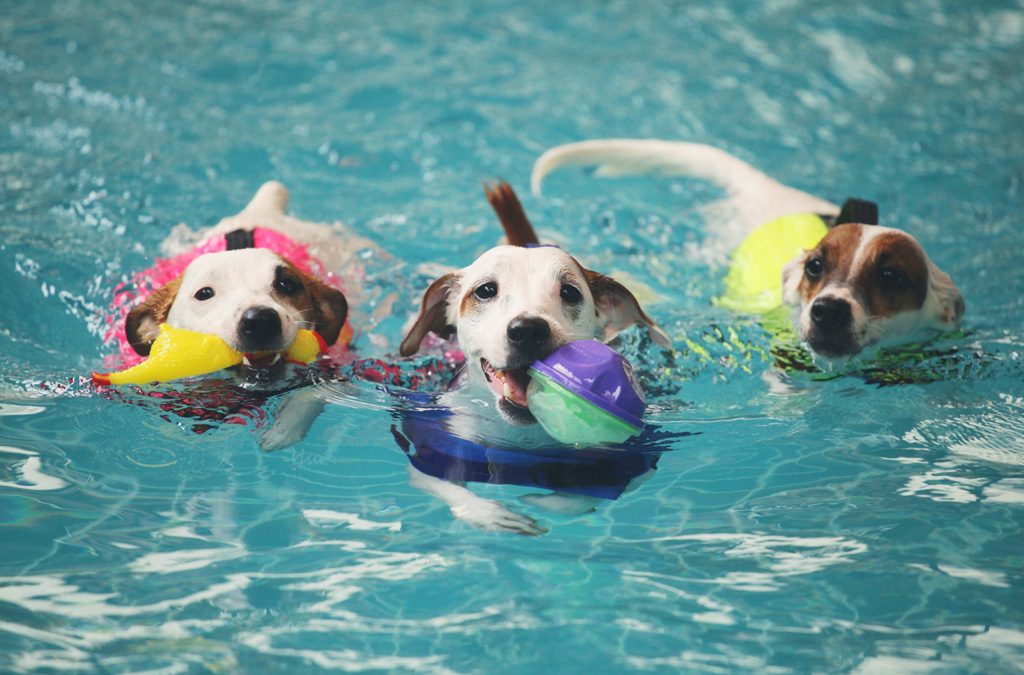Spring is here and summer’s not far behind, so it’s time to plan fun outdoor activities with your dog. Whether hiking, swimming, boating, or picnicking by a lake, your dog will be excited to share in the fun. While including your dog in adventures offers great exercise and mental stimulation, you do need to be aware of potential outdoor dangers so you can keep your pet safe.

Water safety is essential for dogs
Although we think of dogs as natural swimmers, the veterinary experts at PetMD warn that dogs can also drown. It can happen, for example, if they panic in strong currents or get exhausted when trapped in water. Here are tips to help keep your dog safe around water:
- Make sure the backyard pool is enclosed with a fence and is off-limits to your dog when unsupervised.
- Teach your dog how to use pool steps or a pet-friendly ramp to get in and out of the pool.
- If your dog goes boating with you, a dog life jacket should always be worn. Also, make sure your pup knows how to use the dog ramp or steps to get into the boat from the water.
Protect against parasites
Heartworms are transmitted to dogs through mosquito bites and can cause serious damage to the heart and lungs. Fleas and ticks also pose health risks to pets. Fleas can cause skin irritation, and ticks can transmit Lyme disease, Rocky Mountain spotted fever, and babesiosis. Your veterinarian can offer advice on the best preventative medications to protect your dog.
Dogs can also contract harmful bacteria and parasites when drinking contaminated water from streams and ponds. Always bring plenty of fresh water along on walks and make frequent stops to give your dog a drink.

Avoid heatstroke
While any dog can suffer from heatstroke, some are more susceptible to overheating than others. According to the American Society for the Prevention of Cruelty to Animals, this includes breeds with short muzzles (such as pugs and bulldogs), older dogs, obese dogs, and those with other health issues.
When temperatures soar, protect your dog from heatstroke by confining exercise to early morning or after the sun goes down. On warm days when it’s comfortable for your dog to spend time outside, always make sure to provide access to shade and water.
Protect your dog’s paws
While a dog’s paw pads have specialized skin made to take pressure, they are susceptible to wear and tear, says veterinarian Mark Gibson in a PetMD article.
Does my dog need pads for his feet?
During the summer, a dog’s paw pads can be burned when he walks on extremely hot surfaces. To prevent burns, you should avoid walking your dog during the hottest part of the day. If you are concerned about walking on hot pavement, dog shoes offer the best protection against burns, say veterinary experts at the Shallowford Animal Hospital in Lewisville, North Carolina. For dogs who won’t wear shoes, peel-and-stick paw pad protectors are a great option.

Beware of dangers when taking your dog hiking
Your dog’s overall health, fitness, and endurance will determine safe hiking distances, say the veterinary experts at the Urban Pet Hospital in Urbandale, Ohio. In general, an average-sized dog in good shape can hike 5 to 10 miles, while more active dogs can trek between 15 and 20 miles. Young puppies whose bones are still developing and older arthritic dogs shouldn’t be taken on strenuous hikes.
Before you take your dog on a long hike, be sure to walk him around on hard surfaces like concrete and pavement for a while to toughen up his paw pads. Just be sure not to do so on very hot days!
Exercise caution near cliff edges
Every year, the search and rescue teams across the country receive calls for help when dogs fall from cliffs while out hiking with their families. Sometimes these falls are fatal, and the teams have the sad job of recovering a pet’s body, proving just how important it is to keep a close eye on your furry friend while you’re out and about.
How can I ensure my dog doesn’t jump off of a cliff?
Search and rescue workers say that the best way to prevent your dog from falling off of a cliff is to keep your pup on a sturdy leash. Remember, even the best-trained dogs can become distracted or bolt after wildlife and tumble off of a rock ledge.
Taking steps to protect your dog against potential dangers is all part of being a responsible pet parent. Of course, unexpected things can happen during outdoor adventures, so it’s important to be prepared. Include a pet first aid kit in your backpack and know the number and address of the closest animal hospital. Having a plan in case of an emergency gives you peace of mind so you and your dog can enjoy nature to the fullest.



